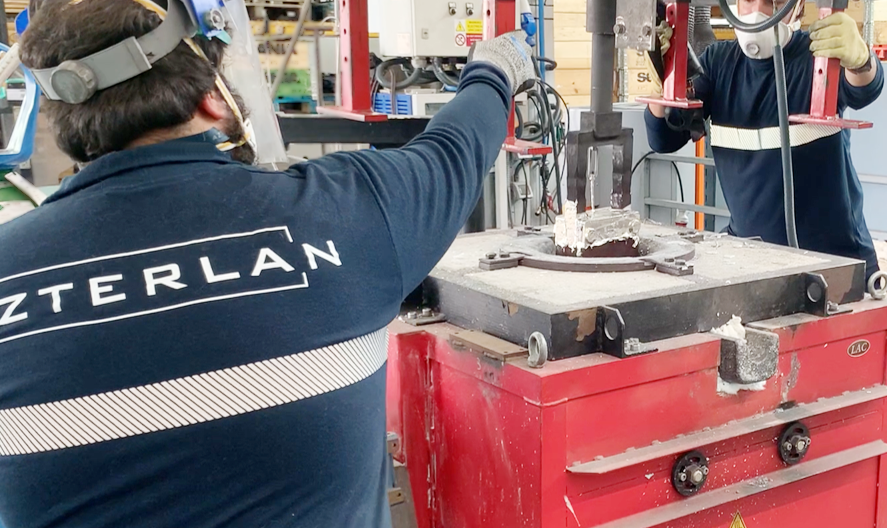HTSteels steels are a new family of super refractory steels whose chemical composition includes alloying elements not present in commercial refractory steels and a stabilization heat treatment, which ensure mechanical properties at high temperatures from the moment the material is used, reducing its deformability and favoring the deceleration of crack growth in high temperature environments.
Refractory stainless steels are commonly used in the manufacture of industrial equipment components subjected to high temperature stresses (400-1100ºC), in corrosive conditions and withstanding significant loads and wear. For this reason, they are present in applications such as structural components, radiation tubes and parts containers in heat treatment furnaces used, mainly, in the sectors of production of rolled products and steel and aluminum castings. Its use also extends to beams, trays and rails in furnaces associated with metal or ceramic sintering in sectors such as powder metallurgy, microfusion and ceramics, structural and transport elements in hot stamping, mining or cement furnaces, etc.
The use of refractory steels is conditioned by two main factors: their useful life in service and the cost of the raw materials used in their manufacture. As explained by Fernando Santos, head of Materials and Special Processes at AZTERLAN, “the useful life of these elements is critical, since their replacement in equipment that works continuously requires the complete stoppage of the manufacturing process, which represents significant losses energy and productivity. In all cases, the rapid degradation of the components also supposes an important consumption of resources when it comes to the valuable and scarce alloys contained in them”.
In this regard, the main failure modes of these components are linked to prolonged deformation (creep), crack propagation, thermal fatigue, wear and corrosion. For this reason, developing materials with higher creep properties, crack growth rate, thermal fatigue, and wear resistance, while maintaining a good level of corrosion resistance, is essential to avoid rapid degradation of these critical components. “The strategy that we have followed to achieve this objective has been oriented towards understanding the role of each chemical element in the microstructure of the material, as well as the process flow and its variables, as critical aspects to take into account in the final properties. The application of the methodology that we call SUMA (Superior Materials) has allowed us to interpret the microstructural mechanisms behind the high-temperature properties and select a defined range for each alloy element and its combined proportion. Following this line of work, we have developed a new family of “super refractory” steels, which incorporates new alloying elements, adjusting others that use to be present in commercial refractory steels and a stabilizing heat treatment to guarantee homogeneous and advantageous final properties from the start. for use in service”.
These new super refractory steels, called HTSteels and protected by patent, include in their chemical composition elements such as Mo, Nb and W, “which promote the precipitation of carbides, in such a way that they make it difficult for cracks to advance through the material/component”. They also have tighter amounts of Ni and C “in such a way that we achieve good mechanical properties without affecting the good resistance to corrosion, which refractory steels already offer.”
To ensure the optimal industrial transfer of this material and its application in the production of parts on an industrial scale, the team has also developed a manufacturing process for these materials. This process, based on a conventional casting process to which some adjustments are incorporated, has as its main keys “to ensure sufficient homogenization of the elements of the charge and to reduce inclusions and oxides in the material”. However, the most innovative aspect “consists in the design and incorporation of a stabilization heat treatment aforementioned, which actually comprises a homogeneous and ordered precipitate of secondary carbides throughout the matrix, thereby increasing the mechanical properties at high temperatures.”
This new family of super refractory steels has been developed within the HiperMAT European project.


